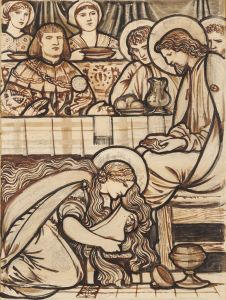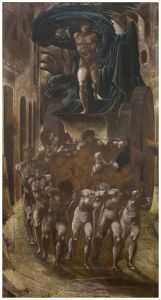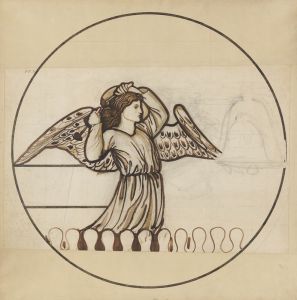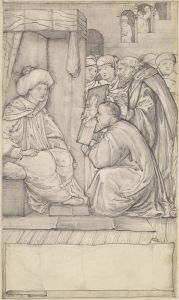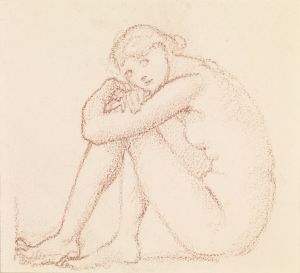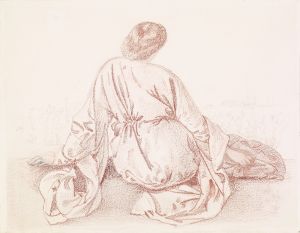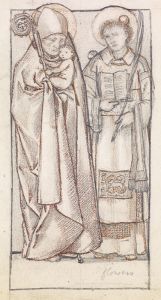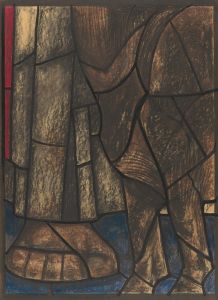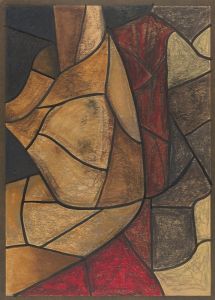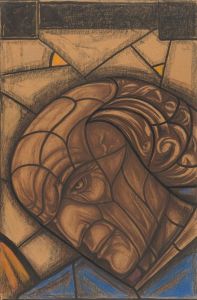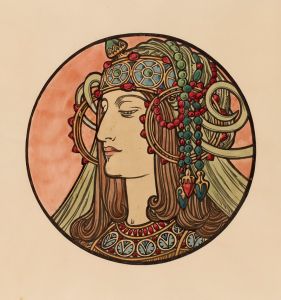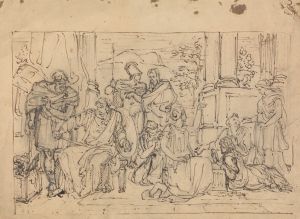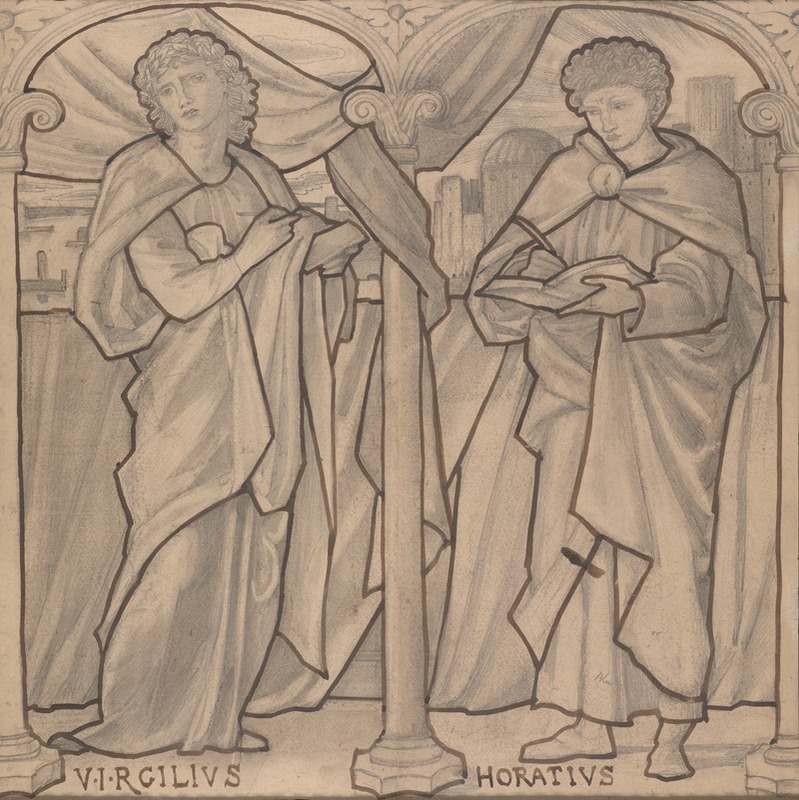
Preparatory Design for a Stained Glass Window, Virgil and Horace
A hand-painted replica of Sir Edward Coley Burne-Jones’s masterpiece Preparatory Design for a Stained Glass Window, Virgil and Horace, meticulously crafted by professional artists to capture the true essence of the original. Each piece is created with museum-quality canvas and rare mineral pigments, carefully painted by experienced artists with delicate brushstrokes and rich, layered colors to perfectly recreate the texture of the original artwork. Unlike machine-printed reproductions, this hand-painted version brings the painting to life, infused with the artist’s emotions and skill in every stroke. Whether for personal collection or home decoration, it instantly elevates the artistic atmosphere of any space.
Sir Edward Coley Burne-Jones, a prominent figure in the Pre-Raphaelite movement, created the "Preparatory Design for a Stained Glass Window, Virgil and Horace" as part of his extensive work in stained glass design. Burne-Jones was known for his intricate and detailed designs, which often drew inspiration from literature, mythology, and classical themes. His collaboration with the firm Morris & Co., founded by his close friend William Morris, was instrumental in the revival of stained glass art in the 19th century.
The design in question, "Virgil and Horace," reflects Burne-Jones's fascination with classical antiquity. Virgil and Horace were two of the most celebrated poets of ancient Rome, known for their contributions to Latin literature. Virgil, best known for his epic poem "The Aeneid," and Horace, renowned for his odes and satires, were central figures in the cultural and literary heritage of Rome. Burne-Jones's choice to depict these poets aligns with the Victorian era's admiration for classical themes and the humanistic values they represented.
Burne-Jones's preparatory designs were often detailed and served as the blueprint for the final stained glass pieces. These designs were typically executed in pencil and watercolor, allowing Burne-Jones to explore the composition, figures, and color schemes that would later be translated into glass. The preparatory nature of the work suggests that it was intended to guide craftsmen in the production of the stained glass, ensuring that Burne-Jones's artistic vision was faithfully realized.
The collaboration between Burne-Jones and Morris & Co. was significant in the context of the Arts and Crafts Movement, which sought to restore the quality and craftsmanship of decorative arts. Stained glass was a medium that perfectly encapsulated the movement's ideals, combining artistry with functional design. Burne-Jones's designs were characterized by their medieval influences, elongated figures, and rich color palettes, which became hallmarks of his style.
While specific details about the commission or location for which "Virgil and Horace" was intended are not readily available, it is likely that the design was part of a larger project, possibly for a church or a private residence. Stained glass windows were popular in ecclesiastical settings, where they served both decorative and didactic purposes, illustrating biblical and historical narratives for congregations.
Burne-Jones's work in stained glass remains highly regarded, and his designs continue to be studied for their artistic and historical significance. The "Preparatory Design for a Stained Glass Window, Virgil and Horace" exemplifies his ability to blend classical themes with the aesthetic principles of the Pre-Raphaelite Brotherhood, creating works that were both beautiful and intellectually engaging.
In summary, Sir Edward Coley Burne-Jones's "Preparatory Design for a Stained Glass Window, Virgil and Horace" is a testament to his skill as a designer and his deep appreciation for classical literature. Through his collaboration with Morris & Co., Burne-Jones played a crucial role in the revival of stained glass art, leaving a lasting legacy in the decorative arts.





